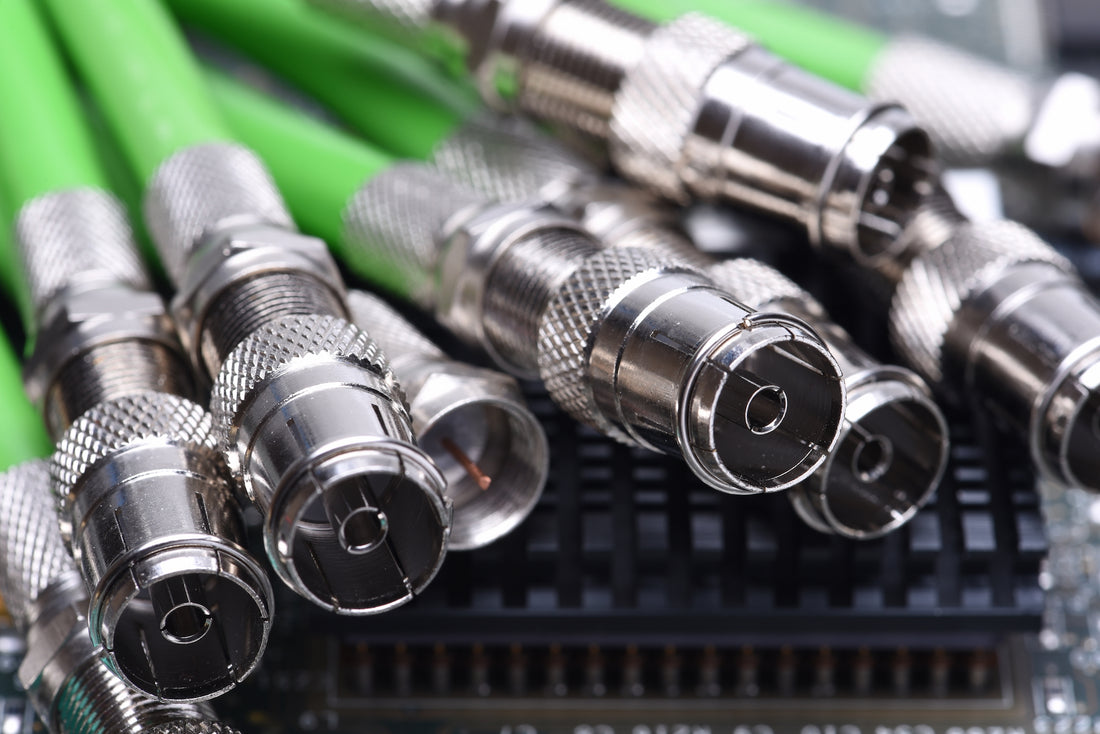
CATV, CCTV, RF: What Coaxial Cables to Use and When to Use Them
When putting together your new home network or wiring a new building, Primus Cable makes it as easy as ever providing end to end products that you might need. But there is still a range of information to be considered before you check out.
When putting together a new system, whether it is a surveillance or television system, you need to make sure you are purchasing the correct coaxial cables and accessories to go along with either a CCTV, CATV, or RF system.
What is CATV?
CATV is the acronym for Community Access Television, or the now more widely known cable television. CATV uses radio frequency signals transmitted through coaxial cable to deliver broadcasted programming to consumers.
What is CCTV?
CCTV is the acronym for closed circuit television, often broadcasted within a building or facility. This type of signal is monitored and not freely accessible. This system requires a direct connection between an analog camera and the receiving equipment such as an NVR/DVR or monitor. An IP camera works in a similar way, using a local area network (LAN) rather than a direct connection, but still on a private network.

What is RF?
RF is the acronym for Radio Frequency, which is a standard of communication in many industries. It uses electromagnetic radiation to get information from one place to another without a direct electrical connection. With Radio Frequency signals, a signal is sent via transmitters and receivers and carried by coaxial cables. For example, a transmitter sends a signal to an antenna at your house, then coaxial cable carries that signal from the antenna to the wireless internet modem inside.
What Coax Cable do I use with CATV?
When wiring a CATV system, there are two cabling options. RG6 Coaxial Cables is the standard, its flexibility making it the ideal option for both residential and commercial uses. Signal retention in RG6 makes it suitable for digital cable and satellite television.
On the other hand, the larger coaxial cable, RG11, has maximum signal retention in audio and video applications but is the less flexible option due to its larger design. The higher signal retention in this cable makes it efficient in longer runs where bending or flexibility does not need to be considered.
Our RG11 and RG6 coax cables come with conductors composed of either Bare Copper (BC) or Copper Clad Steel (CCS). BC coaxial cables are ideal for longer runs with high levels of data, while CCS coaxial cables are best for shorter distances and are more cost effective.

What Coax Cable do I use with CCTV?
RG59 is the standard coaxial cable used in CCTV applications. With a variety of options, we have RG59 coaxial cables to meet your needs. Our RG59 cables have 20AWG Bare Copper conductors, optimizing the signal integrity for low power analog video and radio frequency signal connections. Our RG59 coaxial cable conductors are made of either Bare Copper or Copper Clad Aluminum (CCA). The cables with CCA conductors are lighter and less flexible, compared to the malleable BC conductors. We also sell RG59 Siamese Cables which provide data and power with a single run, saving time and money.
What Coax Cable do I use with RF?
The best option for cabling with RF applications is RG11. RG11 has higher signal retention and is ideal for longer distance cabling needs. Compared to RG6 and RG59, RG11 is denser and less flexible making it the best option for long runs with few turns. We carry various RG11 Coaxial Cables with 14 AWG Copper Clad Steel conductors. For use inside of a house we offer both plenum and riser options, and for outside we have a direct burial option that is built to withstand moisture and heat exposure.
For outdoor radio frequency applications MIG-600 Low Loss Coaxial Cable is a popular option due to its sunlight resistant jacket, allowing it to endure long-term environmental exposure. Our MIG low loss cables are dual shielded to maximize signal retention. This coaxial cable is designed for direct burial or tower applications.

Differences in Shielding
Once you pick the network type and correlated cable type, the next question should be which shielding to use. Shielding protects the conductor from electrical and magnetic field interference.
Coaxial cables come with various shielding options. Typically, there are two types of layers, a foil layer and a braided layer. A foil shielding layer is often higher coverage but lower durability, whereas braided shielding is more durable but can range in coverage. Cables can come with a single layer, two layers (dual-shielded), or four layers (quad shielded).

For coaxial cables, signal loss will be similar in dual and Quad Shielded Cables, but the benefit in quad shielding is the interference rejection. In an environment with high electromagnetic interference, such as motors or machines, quad shielded coaxial cable will be the most effective in signal transmission.
Before you check out, don’t forget to check our website for other tools and accessories you may need!
Use Primus Cable for all your Coax Cable needs!

4 comments
With fiber-optic cable being installed, is there any other usages for CATV Cables? I am removing them from my basement. Also old phone wire.
“Informative post! Your breakdown of CATV, CCTV, and RF coaxial cables provides a clear understanding of when to use each, making it easier for readers to navigate through the cable selection process. The practical insights and recommendations add great value, especially for those looking to optimize their setups. Thanks for shedding light on this often confusing topic!”
very informative guide
Is your CATV available in Birmingham, Alabama?